Ten days from Split to Porto Montenegro and beyond.
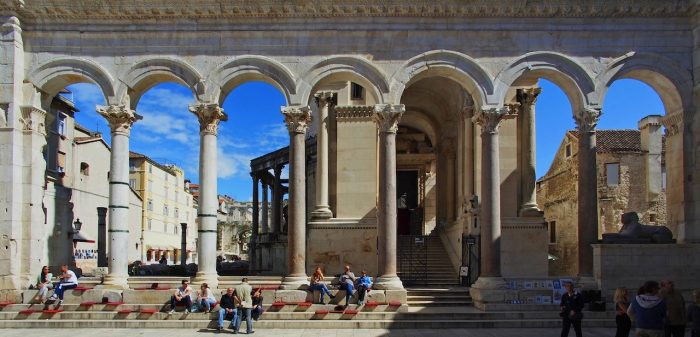
Split, Perestil Kolonada (Courtesy Photo)
It’s not hard to see why two small neighboring states on the eastern coast of the Adriatic Sea have become Europe’s hottest summer destinations. With over 1,200 islands, sky blue water, ancient walled cities, a rich cultural history that includes numerous UNESCO World Heritage sites, high quality local food, snow-capped peaks and pristine lakes, Croatia and Montenegro offer unsurpassed holiday experiences at generally reasonable prices.
A 12-day trek allows visitors to experience many of the area’s highlights, starting with the beaches of Split on Croatia’s northern coast, continuing to the island of Korcula, visiting historic Dubrovnik and partying with the jet-set in Porto Montenegro before ending the journey with breathtaking views (and pure clean air) in the mountains of one of the tiny nation’s glorious national parks.
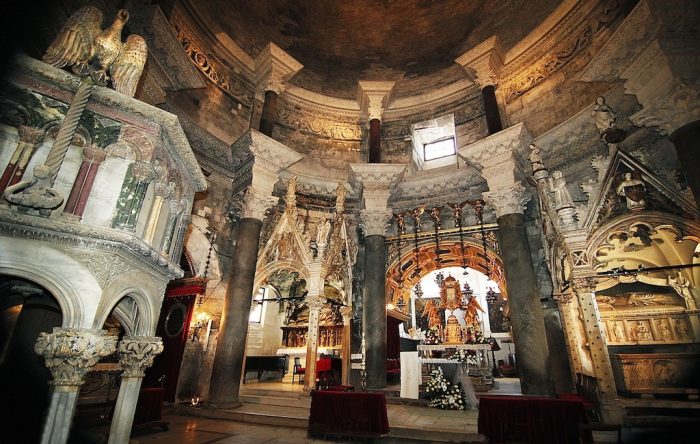
Cathedral of Saint Domnius (Photo by Ante Verzotti)
Split
Savvy travelers “no longer sniff at Split.” The ancient Croatian coastal city, dating from 295 A.D. when the Roman Emperor Diocletian built a palace there, is an interesting jumble of houses, churches, tenements and other medieval-to-modern structures built by its various inhabitants over the centuries, including the Venetians, Ottomans and Austrians. Shipyards and other industrial sites came in the 20th century, both before and during the period of communist rule from 1945 to 1992. Although Split has long been primarily considered a ferry port for tourists traveling to other destinations, Croatia’s second-largest city (after Zagreb) is well worth a visit for its interesting Old Town, beaches, bustling nightlife and international pop music festivals.
STAY: The Luxe Hotel, Kralja Zvomira 6, near the old city and its bustling harbor, is comfortable and contemporary with 1960s retro furnishings, open bathrooms visible through glass partitions and upper floor rooms with terraces overlooking the port. There is no food service apart from a rather mediocre complimentary breakfast. From $200. hotelluxesplit.com.
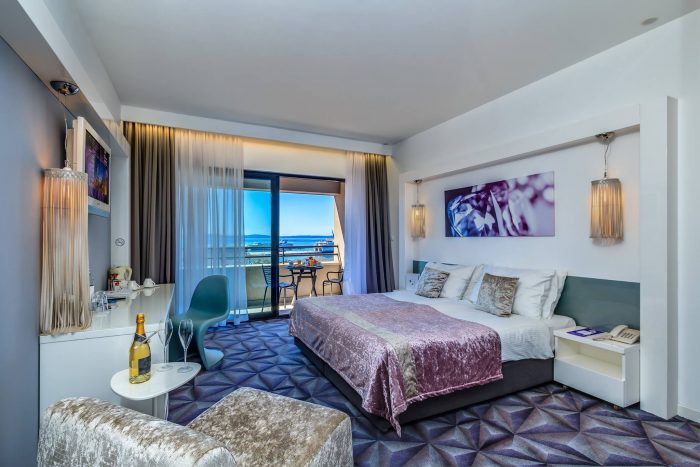
Hotel Luxe Split (Courtesy Photo)
You will immediately want to explore the ancient town centered on Diocletian’s Mausoleum (now the cathedral and bell tower), the Peristyle (central square) and the Temple of Jupiter (now a baptistry) at the center of a maze of winding passageways before passing through to the Riva (seafront) via the Bronze Gate where cafes, shops and arts and crafts stalls are located. While the Split Art Gallery and Archeological Museum are well worth a visit, a 30-minute walk along the seaside promenade to the Ivan Mestrovic Gallery, Setaliste Ivana Mestrovica 39, is highly recommended. The grand palatial building that was once the home and studio of the country’s most famous modern sculptor houses an impressive collection of Symbolist and Secessionist works (some religious and others secular) that are muscularly reminiscent of Rodin. The artist’s “Life of Christ” cycle of wood reliefs can be viewed just up the road the Kastelet, a former tannery and hospital. A visit to the outrageously weird Froggyland museum, Kralja Tomislava 5 , in the main town is sure to appeal to … certain bizarre tastes. Taxidermy artist Ferenc Mere devoted his entire life to assembling this astonishing collection of 507 stuffed frogs in various poses — working, eating, dancing, playing cards, etc.
Beach lovers will appreciate the wide variety of swimming spots within easy reach of the city center. Two of the best are Bacvice, known for its long, shallow and sandy floor, and Znjan, a gravelly alternative a bit farther east where Pope John Paul II held mass for 50,000 worshipers in 1998.
The food, service and atmosphere at F Marine Bar and Restaurant, Obala kneza Branimira 1, on the main port promenade offer enticing seaside experiences with a grand views of the harbor and plentiful people-watching plus an extensive menu of seafood specialties, meats, pastas and risottos accompanied by a good selection of Croatian wines. I couldn’t help returning twice rather than trying to find anyplace better.
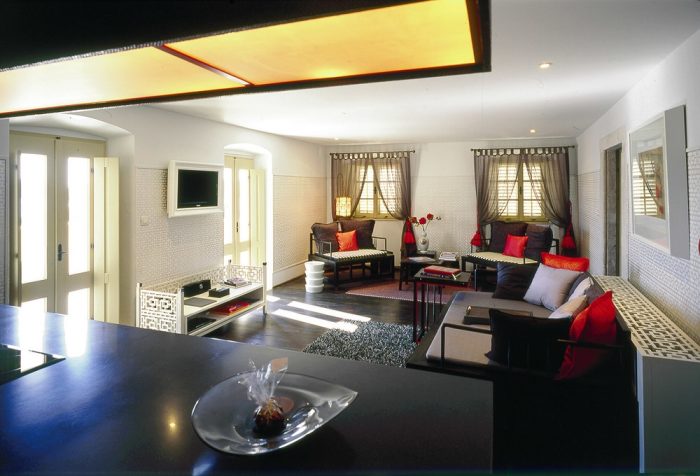
Lesic Dimitri Palace (Courtesy Photo)
Korcula
This beautiful island, one of the most verdant on the Adriatic coast, is a welcome alternative for those wishing to avoid the package holiday crowds and hip party revelers who flock to Hvar, Krk, Pag and other coastal hot spots. Best reached from Split and other coastal destinations via the country’s excellent system of fast, frequent and scenic coastal ferries, Korcula Town’s surviving fortifications from 800 years of Venetian rule, roughly the 10th to the 18th centuries, dominate the walled city and its well-preserved center featuring a maze of narrow streets that branch off from the main square.
STAY: Check in first at the Lesic Dimitri Palace, a boutique hotel complex of beautifully restored stone houses with an elegant — and highly recommended — waterfront terrace restaurant where you can dive right into the refreshing water not too far below, The six luxury “residences with a kitchenettes range from one- to four-bedrooms and are serviced by a staff well accustomed to pleasing a discriminating clientele that includes Russian billionaire Roman Abramovich and the former emir of Qatar. $550-$1,500 esic-dimitri.com. A chat with the friendly owner, British investment banker Micheal Unsworth, might result in an invitation for a sunset sail to the islet of Badija where you can stop by an impressive Franciscan monastery that was returned to the monks not so long ago.
Back in town, take a leisurely tour of the Cathedral and Bishop’s Treasury with its small but choice collection of works by Tiepolo and Carpaccio and be sure to catch a performance of the Moreska, a traditional sword dance with performers engaging in mock battle over the fate of a veiled young woman every Monday and Thursday in summer at the open air theater near the 14th century Land’s Gate.
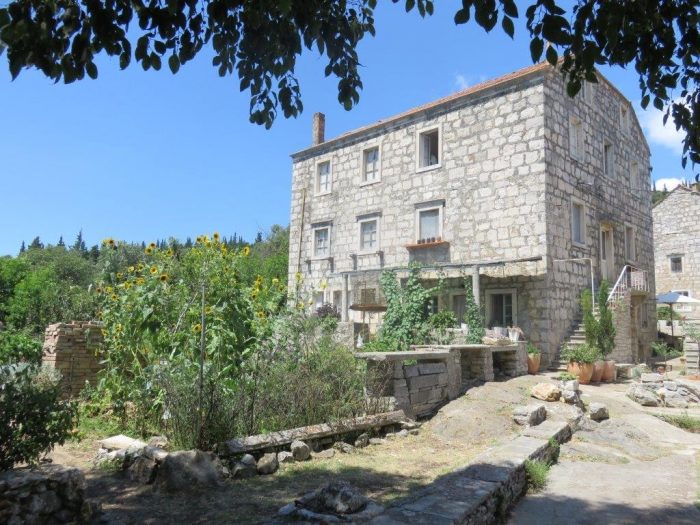
Eko Skoj farm on Korcula (Courtesy Photo)
Your hotel can assist with daytime activities that include the wonderful “Treats of Korcula Tasting Tour,” which includes visits to Eko Skoj, a family-run eco farm that produces organic olive oils and jams, a tasting at the vineyard of one of the island’s top producers of Grk, a Croatian white wine grown almost exclusively on the sandy and very dry soil around the village of Lumbarda at the easternmost tip of the island. Apart from the hotel, another good eating option is Adio Mare, Svetog Roka 2, a third-generation family-run restaurant with views of old city and tasty local food in a medieval-era dining room and outdoor terrace overlooking the town.
Dubrovnik
The Dalmatian coast’s most famous tourist attraction by far, Dubrovnik’s sea battered walls and medieval town attract hordes of tourists from late spring through early fall, with July and August the peak season for visitors seeking lively beach and nightlife scenes. Yes, it can be hot and crowded then — but also worth it if you remember to schedule activities based on the number of cruise ship passengers disembarking each day. Check with your hotel to determine the port authority color codes (blue, green or red) that indicate the number of passengers likely to disembark each day.
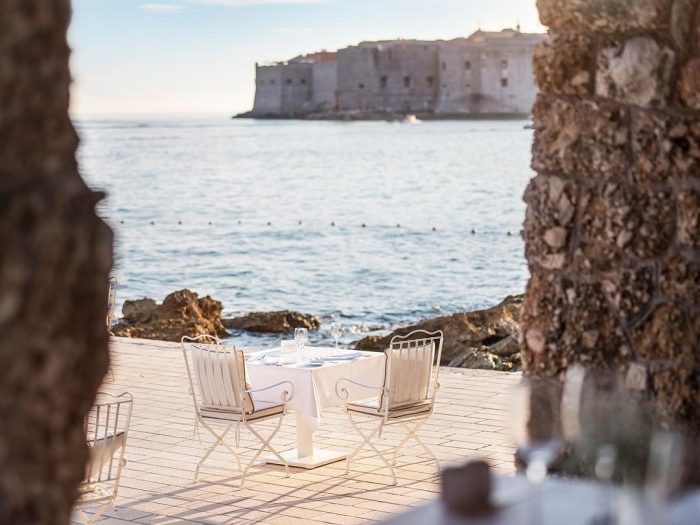
View of the town walls from the Excelsior hotel in Dubrovnik (Courtesy Photo)
STAY: Set in a former royal villa, the recently renovated five-star Excelsior, Frana Supila 12, is highly recommended for its location (a 12-minute walk to the gates of the old city) and spectacular vistas of the harbor and town from the terrace of its top notch bar and restaurant. The luxurious balcony rooms and suites face in the same direction and are vastly preferable to the viewless accommodations on the hotel’s back end. There is a large and generally unpopulated indoor pool adjacent to an outdoor deck where you can take a refreshing dive into the azure blue sea during the early afternoon hours when its way too hot to explore the town. From $460. adriaticluxuryhotels.com.
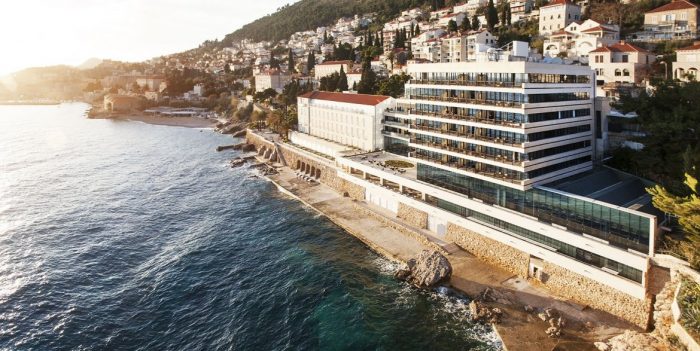
Excelsior Hotel (Courtesy Photo)
Begin your visit with a tour of the extensive battlements and towers that encircle the town’s historic heart. This panoramic perspective will give you a good basis to decide what other medieval and Baroque highlights you’ll want to explore in Dubrovnik. There are about 1,500 steps involved in a complete circumference, so plan to visit early or late to avoid the intense heat in summer. A different but equally marvelous view can be enjoyed from the top of Mount Srd, which is accessed via cable car or a steep climb. Reserve a table at Restaurant Panorama to best enjoy a celestial view of the sea and town. nautikarestaurants.com.
Visitors throng the Stradun, or Placa, the main thoroughfare that runs from west to east where many of the shops are located. You will notice that all the buildings have the same door and window frames and that the pavement on the limestone streets has been rendered completely smooth after being trod upon by millions of feet over the years. On the western end, Onofrio’s Large Fountain, a circle of heads spouting water topped by a bulbous dome, provides a cool spot to people watch, preferably with a cool drink or gelato from one of the ubiquitous vendors nearby.
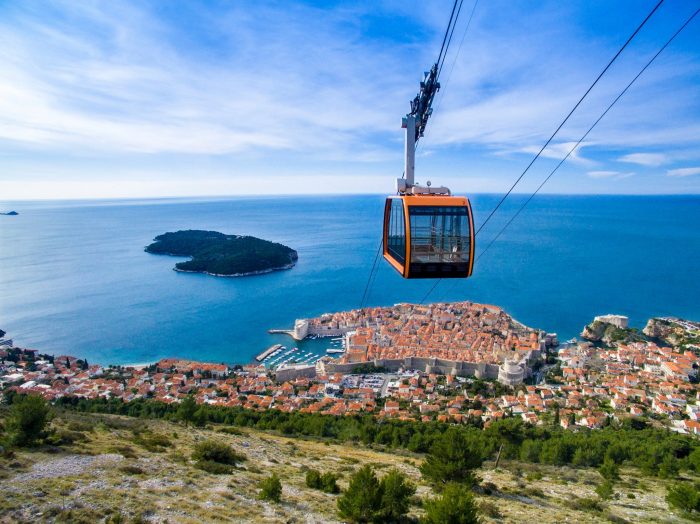
Dubrovnik cable car views (Courtesy Photo)
Other places to visit include the 15th century Synagogue with interiors dating from the 19th century, Luza Square and its many cafes, the Renaissance-meets-Venetian-Gothic Sponza Palace and St. Blase’s Church, a handsome Baroque edifice with a beautiful facade, saintly statues and 20th-century stained glass windows. Another absolute must-see in the same general area is the War Photo Limited gallery, Antuninska 6, a gripping, thought-provoking collection of contemporary photojournalism focusing on the victims of conflict founded by a photographer who reported on the Homeland War from 1991-1995 in Croatia. On a similar theme is the Fort Imperial on Mount Srd containing a permanent exhibition devoted to the victims of the conflict and the destruction of much of the city’s rich cultural heritage.
Nearby is the Dominican Monastery, Ul Svetog Dominika 4, a cool refuge from tourist hordes with a 15th-century Gothic cloister filled with aromatic orange trees, an impressive church, museum and wonderfully old fashioned pharmacy with interesting, high-end products you won’t be able to resist.
“Game of Thrones” fans will find Nirvana here since many places leap from the screen of the wildly popular television series that was partially filmed in Dubrovnik’s Old Town, including the Pile Gate and the Lovrijenac Fort. The two-hour tour is conducted by local guides, including a number of former extras and stand-ins who will gladly share stories and gossip from behind the scenes. Daily tours leave from the Big Onofrio Fountain and cost approximately $30. dubrovnil-walking-tours.com.
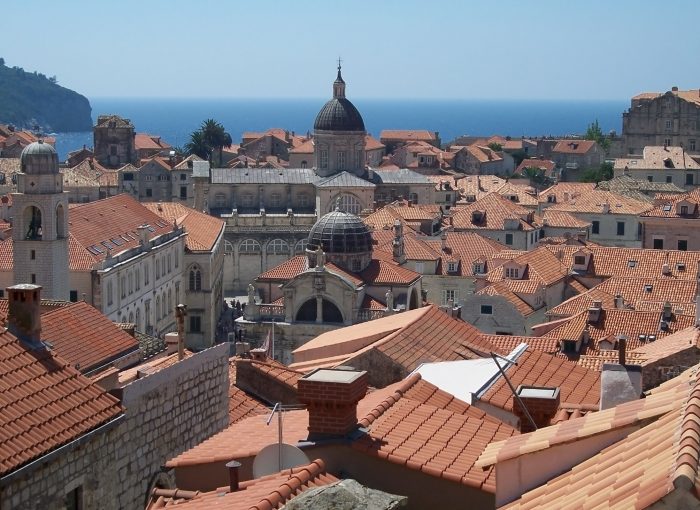
View of Old City Dubrovnik (Courtesy Photo)
After hours of urban exploring, you’ll soon be yearning to escape to one of the numerous beaches nearby, the best of which include Banje (also the most crowded) with fine sand, chairs and umbrellas for hire as well as a bustling cafe scene. Copacabana near the Gruz port is better for the views than actual swimming in not-always-so-clean water. A good bet is the crescent-shaped stretch of sand at the Hotel Bellevue, which is free for guests but charges a small fee for day loungers.
It would be a shame to miss the annual Dubrovnik Summer Festival if you are visiting between July 10 and August 25, when a diverse program of classical music, theater and dance performances is presented at more than 70 open-air venues, including the main town square where a spectacular production of “Carmina Burana” was staged during my visit. Tickets are relatively inexpensive and are easily obtained at the festival office in the center of town. dubrovnmik-festival.hr.
DINING IN DUBROVNIK: Top notch cuisine, superior service and a primo seaside location within the walls of St. Luke’s Fortress are what make 360 Degrees, Sv. Dominika 2, the “hottest table in town.” Chef Marijo Curic flawlessly combines its historical setting with impressive Mediterranean-inspired food (turbot, langoustine, foïe gras) that, while constantly changing, focuses on modern innovations of Croatian classics. The menu is matched by an extensive wine cellar, great people watching and a truly relaxed vibe. Also recommended is Posat, Ul. uz Posat 1, for high end local specialties that include cod wrapped in black olives, grilled octopus and pork fillet in forest fruit and red pepper sauce. Those seeking to sample peka, a mix of vegetables and meat sprinkled with herbs and cooked to perfection under a bell-like dome, can best sample this hearty fare while being serenaded by Dalmatian folk musicians at Konoba Dubrava, located in Bosanka, high in the hills above the city.
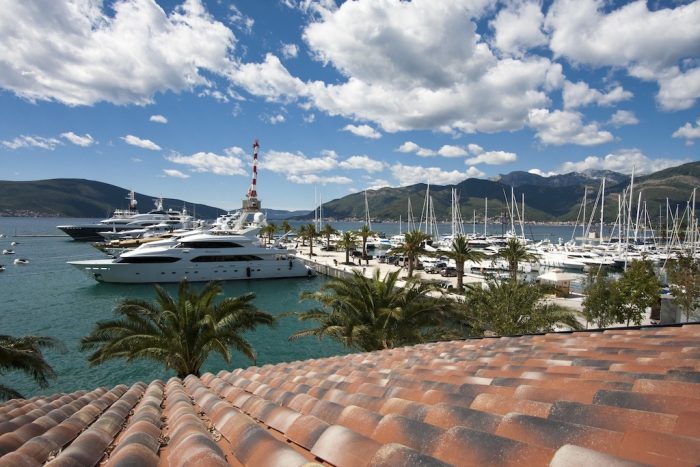
Yacht basin at Porto Montenegro (Courtesy Photo)
Porto Montenegro and Beyond
Ferry transportation down the Dalmatian coast stops at Dubrovnik, which means renting a car (or hiring a car and driver) from Dubrovnik is the best option to explore the charms of neighboring Montenegro, now one of Europe’s hottest destinations. The journey can take two or more hours, much of it spent waiting in line to pass through both countries’ immigration controls, so be sure to allow plenty of time if you have a flight to catch on either side of the border at Dubrovnik or the Montenegrin international airports at Tivat or Podgorika. Well-heeled travelers also have the option of private helicopter service.
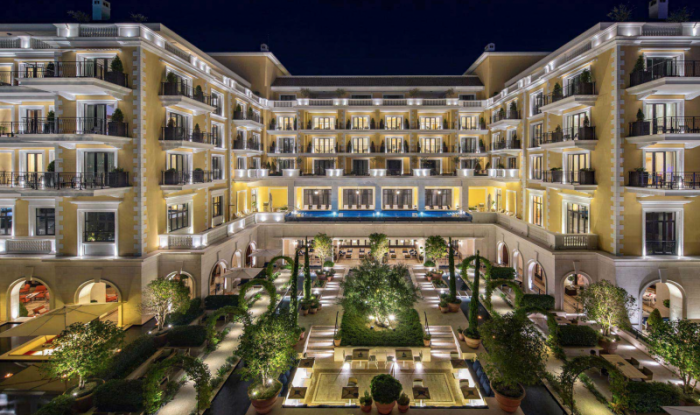
Regent Porto Montenegro (Courtesy Photo)
Porto Montenegro in the town of Tivat on the shore of the nearby UNESCO-protected Boka Bay, is a city unto itself offering every amenity international jet-setters could desire. Developed over the past dozen years and now owned by the Investment Corporation of Dubai, it has become “the new Monaco” with the world’s largest super yachts filling up every spot (up to 800 feet) in the 450-berth harbor in peak summer season. The adjacent “nautical village” teems with high-end bars and boutiques catering to the tastes of an international clientele for whom luxury is an absolute necessity.
STAY: The high-end Regent Porto Montenegro, loosely designed to reflect a refined Venetian Renaissance theme, offers highly personalized service and luxurious accommodations in its 87 expansive rooms and 62 suites and apartments, most with balconies overlooking the water. The stunning 10,000-square-foot pool complex encompasses a luxurious spa and hammam, three swimming pools and a gym. Guests also have access via private shuttle to a separate pool/nightclub facility with a Saint-Tropez vibe as well as a secluded private beach. A meal at the Mediterranean-inspired Murano Restaurant and a drink at the cozy Library Bar are recommended as well as a visit to the outstanding Gourmet Corner, which specializes in artisanal cakes and pastries. From $325. regenthotels.com.
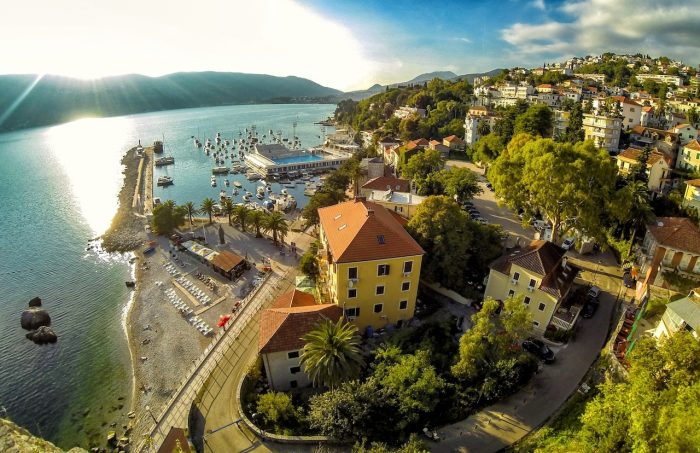
Herceg Novi (Courtesy Photo)
After ogling the yachts, check out the marina’s pricey shops (don’t miss the amazing pharmacy) and watch teenage fashion victims parade about in $700 Dolce & Gabbana T-shirts and other designer duds as they amble to and from daddy’s boat. If you are in a more serious-minded mood, the nearby Naval Heritage Center maritime museum and submarine are worth a look.
You’ll also want to devote a day or more to explore the towns on Boka Bay, Europe’s southernmost fjord. The best way to accomplish this is via private motorboat with a captain/guide who can be hired through the Regent’s concierge (embarkation is immediately adjacent to the hotel). Along the way, Herceg Novi displays a fine combination of romantic, Byzantine and oriental architectural styles while Risan is known for the remnants of classical culture found there, dominated by the remains of a Roman patrician’s villa with beautiful mosaic floors. Kotor, a UNESCO-protected site, is the top attraction, an old Venetian city and cultural center that has withstood numerous invasions over the last thousand or so years and now attracts a lively crowd in summer that throngs its picturesque churches, museums and restaurants. It’s easy to experience daily life while meandering about the narrow lanes and small squares because it has not been totally overwhelmed by tourists except when cruise ship passengers disembark for a few hours of look & see. Finally there is Perast, another UNESCO Heritage-protected town where no cars are allowed, making it rather pleasant to explore its palaces and churches, some in ruins, set amid small hotels and family homes.
Your captain will surely disembark you at Our Lady of the Rocks (Croatian: Gospa od Škrpjela) off the coast of Perast, an artificial islet created by a sinking derelict and pirated ships loaded with rocks. The Roman Catholic Church of the same name was constructed by local seamen who kept an ancient oath after finding an icon of the Madonna and Child on the rock in the sea in 1452. The church, which was renovated in 1722, contains 68 works by Tripo Kokolja, a famous 17th-century Baroque painter from Perast.
DINING AND MORE: At the foot of Porto Montenegro’s yacht-infested Jetty 1, One Restaurant’s spacious terrace beckons with “the most expensive view in the country.” Although the modern Adriatic menu featuring local ingredients competes with international favorites unavailable elsewhere, people watching will always be the main course here. The extensive wine list features many rosé labels as well as high-end champagnes. The Clubhouse, located a bit aft in the harbor, is a low-key nightspot that attracts an eclectic, younger crowd. Owned by a pair of Australian “best mates,” this casual watering hole is famed for oddly named drinks (“Boulevardier,” “Pink Pussy”), DJs and live music as well as great eavesdropping opportunities when off-duly crew from the super yachts dish about the owners’ various peculiarities and peccadilloes. It’s also the best place in town to watch major televised sports events like the World Cup.
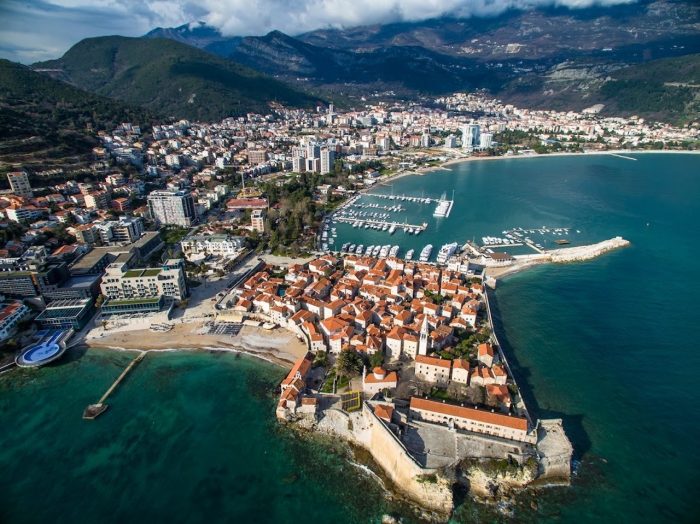
Budva (Photo by Sergej Zabijak)
It is best to rent a car to further explore Montenegro. Begin by driving from Tivat further down the coast to Budva, a summer party paradise boasting the best beaches in the country, ranging from the secluded and quiet to those with bustling party scenes and thunderous dance music that lasts until sunset (when scenesters continue their revelries back in the historic old town). Founded by the Greeks in the fourth century B.C. and fortified in the Middle Ages, it is now the center of the “Budva Riviera,” which runs 22 miles from Trsteno to Buljarica, and is dotted with sheltered coves and miles of sand and pebble beaches. Those with deep pockets but no super yacht can be spotted at Montenegro’s most expensive and exclusive hotel, the Aman Sveti Stefan, a complex of 15th-century stone buildings more like a medieval village than a hotel, housing 50 palatial suites and cottages with inspiring views of the coast. From $750. aman.com.
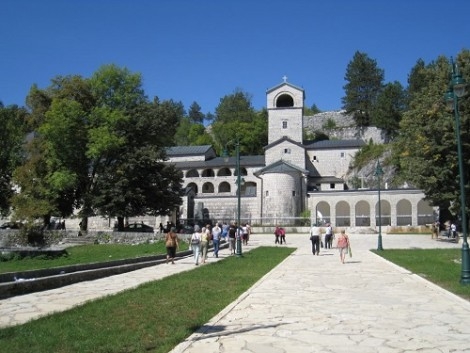
The old capital of Cetinje (Courtesy Photo)
Head north to Cetinje, an odd combination of former capital city and quaint village that is the nation’s cultural heart. Get a 10-euro ticket to gain entry to six different museums, the most interesting and important of which is the King Nikola Museum Palace. The home of the ruling Petrovi-Njegoš dynasty until they fled in 1918, its somewhat musty rooms contain ornate furniture, Chinese vases, imposing portraits, taxidermied animals and a beautiful library that is closed to the public but can sometimes be accessed via a hired guide. Also visit Cetinje Monastery dating to 1786 and the History Museum, grandly housed in the city’s former parliament, that follows a timeline from prehistoric times to the mid-1950s.
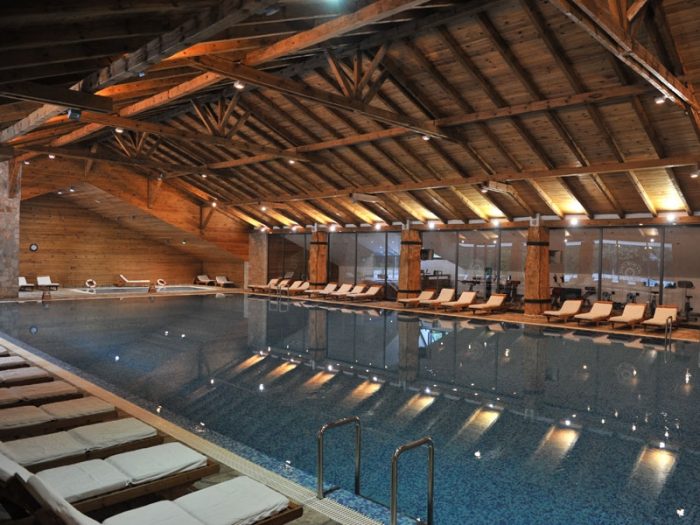
The pool at the Bianca Hotel & Spa (Courtesy Photo)
Meander further northward enjoying the dramatic views through the mountainous region where the country’s vast national parks and pristine lakes are located. Check in at the Bianca Resort & Spa, a ski lodge in the town of Kolasin that is quiet, clean and features a huge pool, a whirlpool and an excellent sauna. Rooms are smallish and have no air conditioning or screens on the windows (although that is generally not a problem at this altitude). The cafeteria-style food is bland at best with the staff grumbling if they have to prepare anything off the limited à la carte menu — “communist-era hospitality” at its best! From $75, kolasin1450,com. (TIP: Ask for directions to a nearby restaurant run by the Damjanovica family that features hearty local specialties including local trout and kacamak, a tasty cheese and potato staple.)
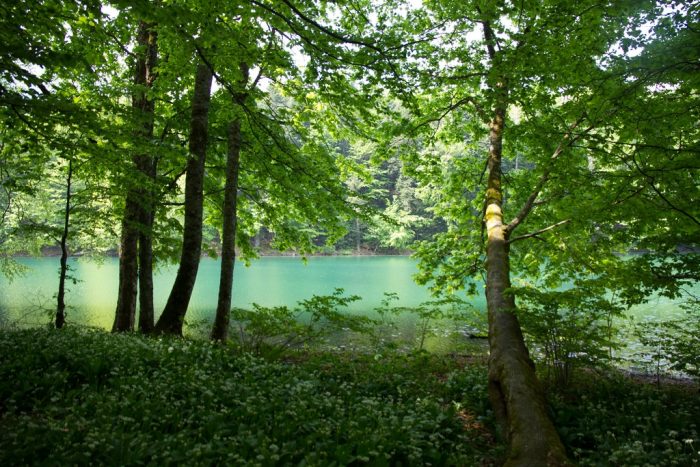
Biogradska Gora (Courtesy Photo)
From Kolasin it’s a two-hour drive to Biogradska Gora, the second oldest (1878) national park in the world, boasting one of the largest primeval forests in Europe. You’ll want to spend most of the day exploring its verdant landscapes, six pristine glacial lakes and 26 different habitats burgeoning with diverse flora, fauna and fish (including the grayling, which has disappeared from the rest of Europe). Historic heritage sites include sacral monuments and traditional architecture structures. Contact the The Explorer Tourist Agency explorer.co.me for top notch guided tours and be sure to ask about a visit to Eku Katun Vranjak, about 5,000 feet above sea level at the end of a bumpy, winding dirt road. The remote, family-run nomadic settlement of ten wooden chalets (some are available for overnight stays) sits amid breathtaking peaks and rolling pastures with herds of goats and cows feeding on grass as you enjoy a hearty lunch there. Reserve overnight stays and lunch-only visits at jelka.me.
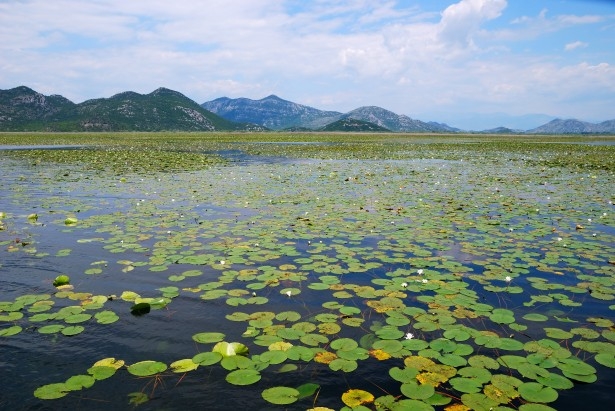
Lake Skadar (Courtesy Photo)
Enjoy the drive south back to Tivat past rolling farmlands, creeks and the impressive Moraca Canyon to Podgorica (pronounced Pod-go-reet-sa), Montenegro’s “pocket-sized” capital known as “Titograd” in communist times. Stroll along the main street, the Slobode, as well as the side lanes to explore the Old Town (Stara Varos) and its shops, cafes and restaurants including Pod Volat for delicious pizzas and regional dishes that are ridiculously cheap.
Lake Skadar is not on the normal tourist route because it is neither on the coast nor anywhere near to the sprawling national parks. It is however a great place to stop if you enjoy the great outdoors and want to hike, bicycle, swim at freshwater beaches or explore nature preserves. Be sure to visit the Serbian Orthodox Vranjina Monastery, one of the country’s oldest religious sites located on the south-east part of Vranjina island and accessible by an access road from the shore.




